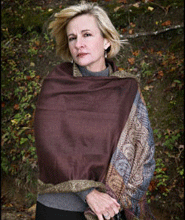In July 1984, a man broke into Jennifer Thompson’s North Carolina apartment, put a knife to her throat and raped her. Throughout her ordeal Jennifer tried to memorise her attacker’s face so that she would be able to identify him.
Following the attack, Jennifer worked with the police to create a composite sketch of her assailant, relying on what she believed was her detailed memory of his face. Following a tip off, the police were led to a man named Ronald Cotton, who worked at a nearby restaurant, and had a record: a guilty plea to breaking and entering, and as a teenager, to sexual assault. In a police line up Jennifer positively identified Ronald as her assailant.
In 1985, at the first of two trials, Jennifer testified against Ronald, 100 per cent sure in her mind that she had picked the right person. In a second trial in 1987, Jennifer remained convinced that Ronald was her attacker, even though DNA evidence would later prove she was wrong. Following both trials, Ronald was convicted of rape and burglary and sentenced to two life sentences.
Despite Jennifer’s confidence in her positive identification, definitive DNA testing was to later prove who her real attacker was and Ronald Cotton was eventually freed, thanks in large part to his persistence in proclaiming his innocence and the development of sophisticated DNA tests.
New York best seller ‘Picking Cotton’
Following Ronald’s exoneration, the two have joined forces to fight against injustice, given speeches about their experiences, advocate for judicial reform, and have worked to highlight the causes of wrongful conviction. They have focused on pursuing reforms to eyewitness identification procedures – urging states to mandate changes that are proven to reduce misidentifications. Their advocacy has contributed to successful reforms across the country, including their home state of North Carolina, and a New York Times best-seller book about their experiences entitled "Picking Cotton".
Dr Michael Naughton, Founder and Director of the Innocence Network UK (INUK) and Senior Lecturer in the University of Bristol Law School and School of Sociology, Politics and International Studies (SPAIS), said: “Victim misidentification is the single greatest cause of wrongful convictions, playing a role in more than 75 per cent of convictions overturned through DNA testing in the US.”
The event, which has been organised by the Watershed, Bristol, in association with Innocence Network UK and the University of Bristol's Law School, School of Sociology, Politics and International Studies, and Centre for Public Engagement, is free and open to members of the public but pre-booking is essential. To reserve a place, visit the eventbrite website: www.eventbrite.com/event/2909029987. Please note that you will need to print out your ticket and present this on the door to gain entry.

